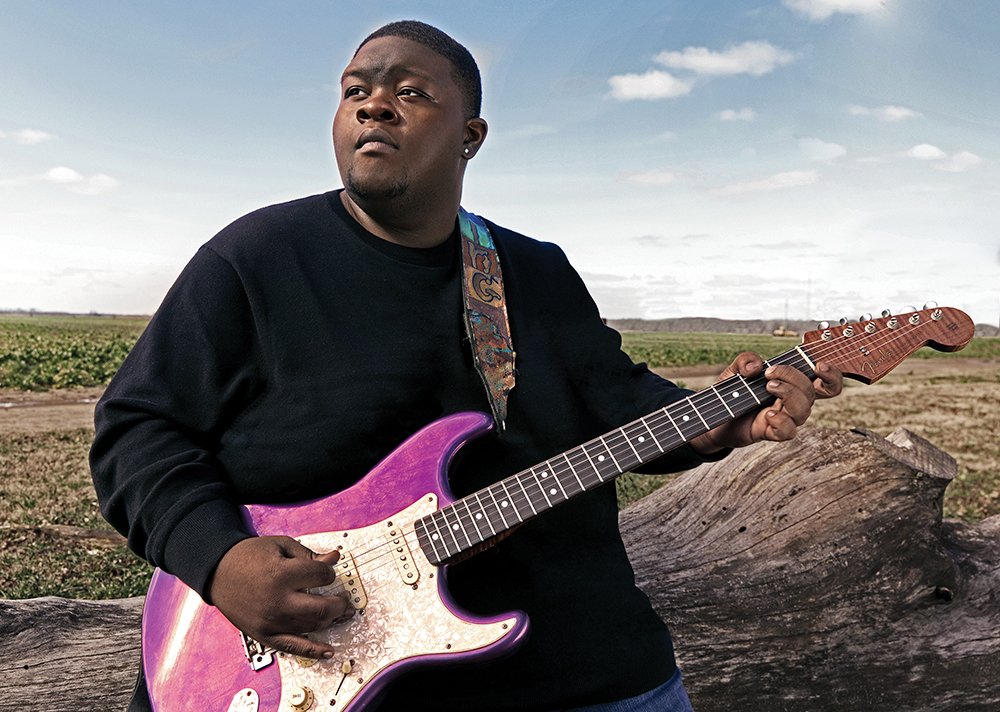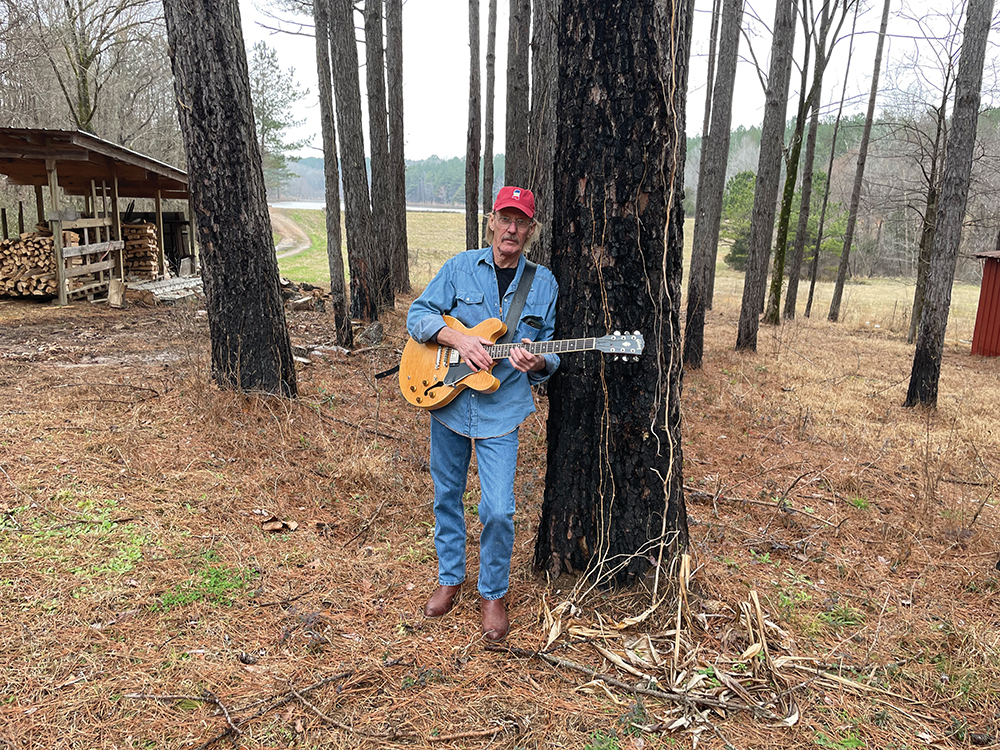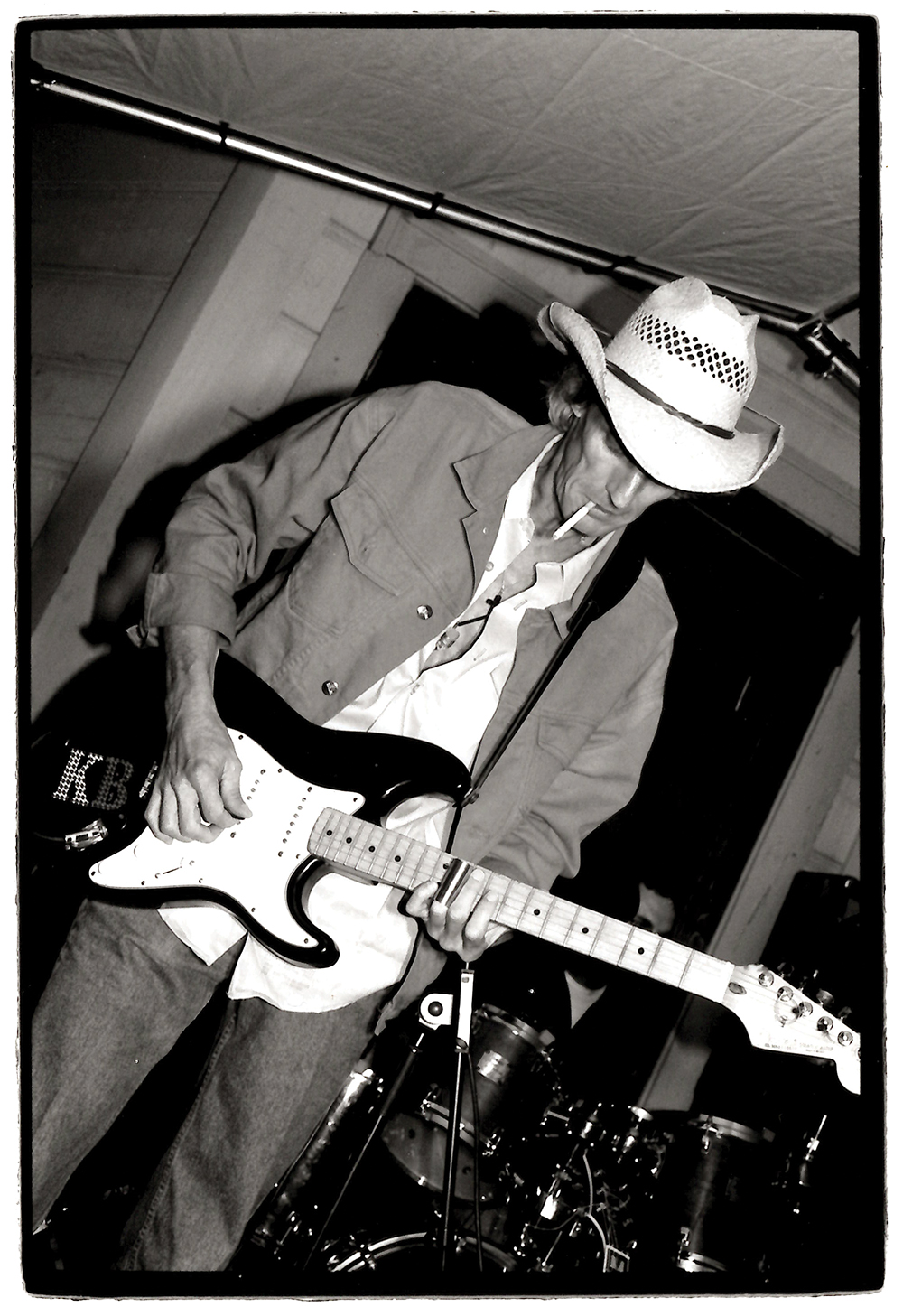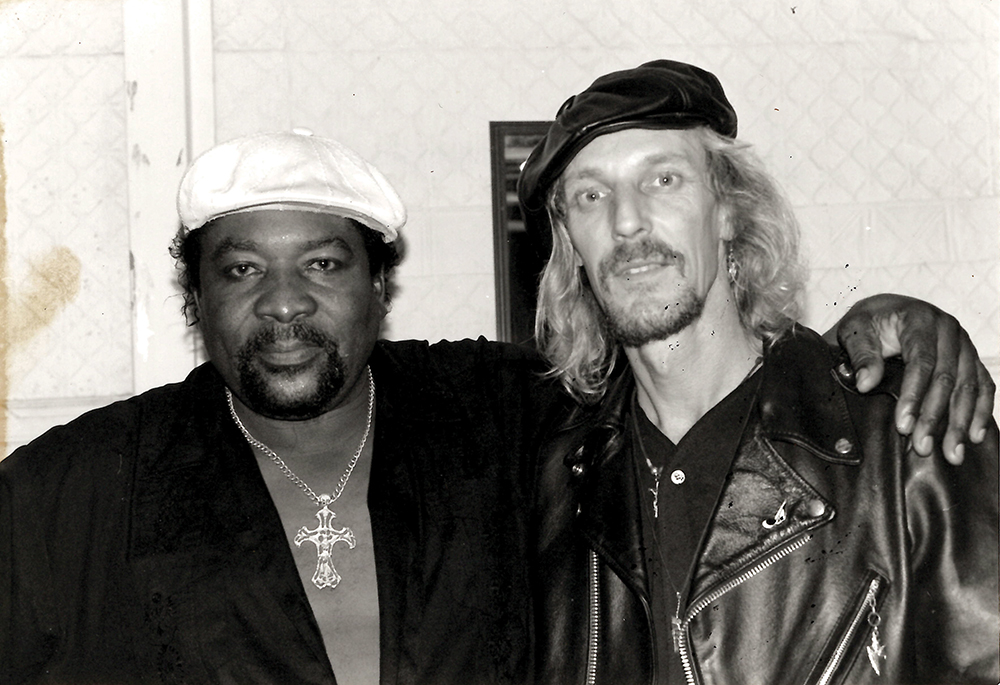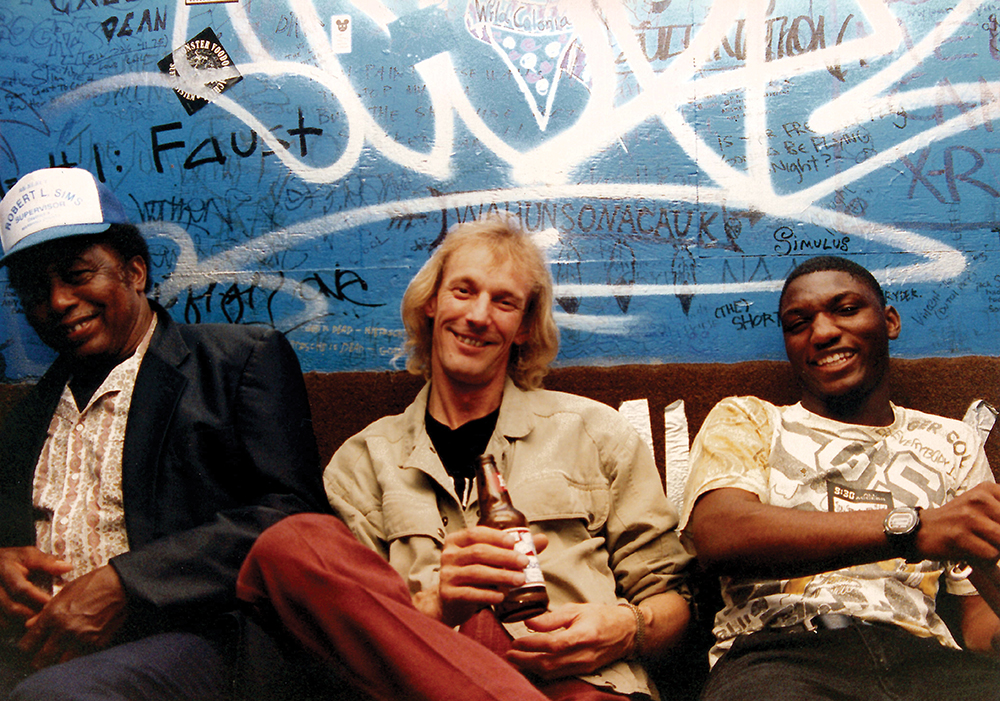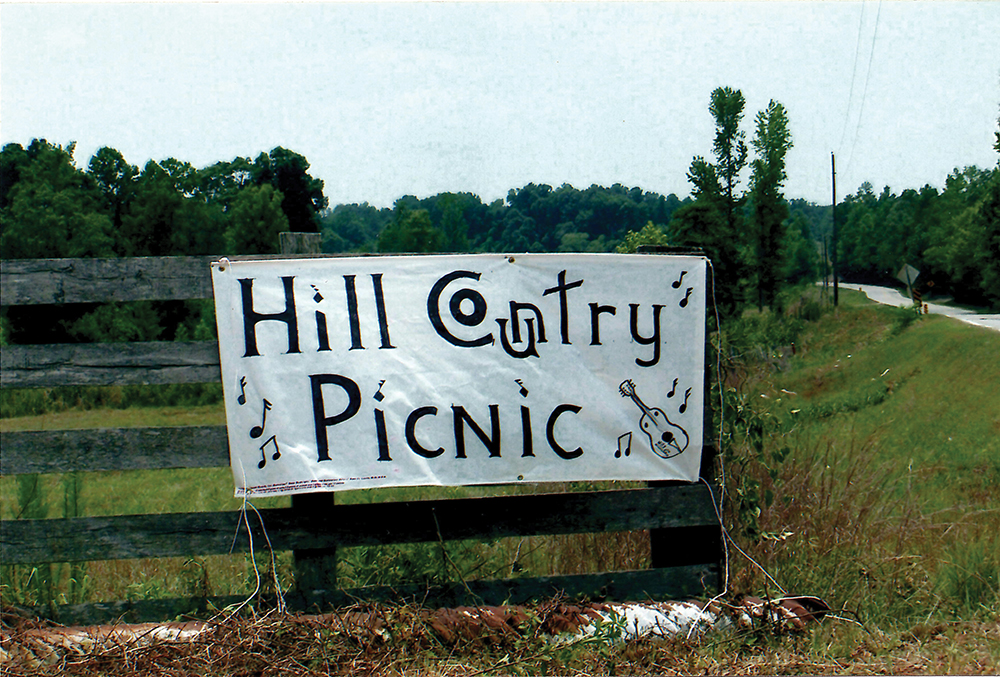“This city’s filled with reasons to kill, but everyone wants to play the blues.” So lamented the Lost Sounds over 20 years ago on their Black-Wave album, and that sentiment, that palpable frustration, was easy to relate to at the time. For youth on the edge of alternative culture, the blues could feel soul-crushing, especially in Memphis, especially on Beale Street. Somehow, it felt like the sound of complacency. I was certainly too snobbish to play Beale Street back at the end of the last century, and I was not alone.
One group, though, worked Beale Street to their advantage in those days. Luther and Cody Dickinson formed the North Mississippi Allstars with Chris Chew and played Beale Street clubs almost from the beginning, relentlessly refining their blues-based rock and funk there, night after night. Over the decades, with a few other like-minded souls, the two brothers have stayed the course, and their ceaseless experimentation has left in its wake a revelation: The blues are extremely mutant-friendly.
Indeed, the blues may be more open to cross-pollination, hybridization, and evolution than any other genre, and that’s never been more apparent than today. After decades of bubbling under the surface, from the Delta to the Hill Country to the gritty, grinding streets of Memphis, the blues have soaked up something from the sands. And now, once again, the creature is stirring.
A New Era
“The blues is dead!” quips Bruce Watson, co-founder of Fat Possum Records, the label that first made its mark with hitherto under-recognized artists like R.L. Burnside and Junior Kimbrough, among others. Then he laughs out loud. “I’m kidding. That’s been our catchphrase for 30 years. Actually, the blues may kind of die down, but there always seems to be somebody who starts the flame again. If you look at The Black Keys’ record from last year [Delta Kream], they were reaching back into the old Fat Possum catalog for most of that. That’s pretty great. It introduces a whole different audience to the blues. These days, it definitely feels like something’s happening.”
That sentiment is shared by many with their fingers on the pulse of the music. “There is a new appreciation for what the blues is and what the blues is all about,” says Judith Black, president and CEO of the Blues Foundation.
Rapper Al Kapone, who we’ll return to later, also knows a thing or two about the blues, and agrees with Black. “A new era of the blues has begun, and it’s needed,” he says. “It’s a great thing to witness. We’re right at the beginning stages of something going on. It’s really cool to see.”
And Christone “Kingfish” Ingram, whose 662 won a Grammy for Best Contemporary Blues Album earlier this year, says, “There’s definitely a new vibe. A crop of young people are coming out of the woodwork, more young people of color. So there’s a big resurgence of the blues at the moment.”

Nostalgic and Futuristic — at the Same Time
Just what specifically is changing is harder to define. One sign came with last year’s release of I Be Trying, by Cedric Burnside, grandson of the great R.L. Burnside. Originally a drummer, he came of age on the road with R.L. and close family friend Kenny Brown, during a time when R.L. enjoyed a revival of sorts, on Fat Possum and elsewhere. Now, being steeped in the North Mississippi Hill Country blues that his grandfather typified, Burnside has appropriately been named a National Heritage Fellow by the National Endowment for the Arts, a sort of guardian of the Hill Country tradition.
The irony is that, despite such historical bona fides, Burnside has forged a style all his own. With a clean, percussive guitar style, likely derived from his years behind the drums, he lays down riffs and snatches of melody that lean heavily on the blues but also evoke echoes of soul and gospel. As with classic Hill Country blues, there’s still a hypnotic quality, but with less distortion (an innovation in itself in R.L.’s day) and a greater sense of playfulness. With the quality and care put into this very intimate-sounding recording, it’s no wonder he took home the Grammy for Best Traditional Blues Album this year, and yet Burnside defies tradition as well. As producer Boo Mitchell says, “It’s nostalgic and futuristic at the same time. It captures all the spookiness of the old deep blues, and it still sounds current. Some of those tracks could be in a Wu-Tang sample.”
Paradoxically, such innovation sits comfortably within the Hill Country tradition. At Kenny Brown’s North Mississippi Hill Country Picnic, taking place this week, June 24th-25th, and now in its 16th year, tradition and innovation sit side by side. Many of the region’s great musical families are represented by performers like Robert Kimbrough Sr., Kent Burnside, Duwayne Burnside, and Garry Burnside, not to mention Shardé Thomas and R.L. Boyce, who both started out in the great Othar Turner’s fife and drum corps, but the tradition of innovation will also have its hour, with longtime blues genre-benders like the North Mississippi Allstars and Alvin Youngblood Hart.
Though Cedric Burnside will not perform there this year, his unique sound may be a direct result of the tradition’s innovative side. As David Evans, a former ethnomusicology instructor at the University of Memphis and highly regarded authority on local blues, notes, “People have identified Cedric, either rightly or wrongly, with this Hill Country sound or style. And he’s supposed to be upholding that, and that might be a little restrictive. He seems like a guy who likes to explore.”
Or, as Burnside himself puts it, “Different, to me, has always been a great thing. I always wanted to be different.”
Too Young to Remember, Old Enough to Know
If Cedric Burnside, now 43, seems to have reinvented the blues based on years of playing with his elders, followed by a lifetime of painstaking craftsmanship in search of something different, others are doing the same simply by virtue of their youth. Clarksdale’s Christone “Kingfish” Ingram is the perfect example, and the twin Grammys won by Ingram and Burnside this year are, in a sense, two sides of the same shiny new blues coin.
Twenty years younger than Burnside, Ingram has brought a new energy to the blues of the Mississippi Delta by virtue of having grown up with all the world’s music at his fingertips, even as he matured into a die-hard devotee of the blues. “When I was growing up, my mom played everything, from ’60s soul to Bon Jovi to Patti LaBelle,” he says. “I was always hearing different styles of music. And pretty much all of that inspired me to infuse that into the blues and make my own little genre, for lack of a better term.”
At the time, simply embracing the blues felt like a radical act. “When I went to school, other young kids were more into rap and everything like that. The blues was almost taboo. But now, as I’ve gotten older, I’ve seen more kids in my generation gravitating toward it.” Ingram himself led the charge, diving wholeheartedly into educational programs sponsored by the Delta Blues Museum in his hometown.
“My instructors were actual bluesmen, Bill ‘Howl-n-Mad’ Perry and Richard ‘Daddy Rich’ Crisman. They were my teachers and my mentors of the blues, from the time when I played bass through when I got into guitar. And when they found out I had a little voice, they even pushed me to sing. There were even times when we would do readings. It was a full-on educational class, for sure. And it still goes on today.”
It’s an outcome that historians and supporters of the blues, such as those behind the Delta Blues Museum, can only dream of — until their efforts actually culminate in a phenomenal artist like Kingfish Ingram. And much of that can be put down to Ingram’s unique personality, his uncanny feel for the traditions that came before. “I’m too young to remember,” he sings on one track, “but I’m old enough to know.”
While the overall sound of 662 (name-checking Clarksdale’s area code) has an up-tempo drive and bounce that ranges from the hard rock power chords of “Not Gonna Lie” to the mellow soul stylings of “Another Life Goes By” or even alternative balladry like “Rock & Roll,” his voice grounds it all with a weathered worldliness. And somehow that voice comes through his guitar as well. As Boo Mitchell says, “He’s literally one of the most talented and prolific guitar players of our time. He plays with the feel of an 80-year-old man. How can you have that much soul? You’re only 20-somethin’! Kingfish is incredible. His voice, too.”
Not all blues fans feel that way, however. The blues genre in particular has always been plagued with fans who love only that which does not evolve: the purists. “It’s been something I struggled with because trying to get accepted by the purists has always been something I wracked my head over,” reflects Ingram. “In some ways, I’m just getting over it. But I look at it like this: One of the ways I’ve gotten young people into the blues is by mixing other genres into it. But here’s where the tricky part comes in: You don’t want to mix too much, to where it becomes something else. But as far as keeping it pure, I think the more you hear the blues or things that are blues-inspired, it’ll always be pure. When Albert King did his funkiness, you could hear the blues in his funkiness. For me, it’s all pure. Whatever comes from the heart is pure.”

The Soundtrack of Our Lives
If Ingram felt like an outsider among the Black peers of his youth, who gravitated more toward rap, that distinction is coming to mean less and less as the new blues arise out of the landscape today. It’s something that Judith Black noticed soon after taking the helm at the Blues Foundation. “A new duo called Memphissippi Sounds performed at the Blues Music Awards, and right before the ceremony I saw them practice and had an opportunity to meet them. And they don’t necessarily look like your typical blues artist. They look like hip-hop artists. And their sound is kind of a combination of hip-hop and soul and blues. More blues than anything — they’re definitely blues. And I think artists like them are starting to attract a younger crowd, listeners who would not typically choose to listen to blues. So it’s emerging.”
To Black, whose childhood was steeped in older blues thanks to her father, a collector and independent scholar, such emerging connections make perfect sense. “I think there’s a new appreciation for the history that comes with the blues. In this time of racial reckoning, the blues puts that history in perspective. It was the soundtrack of the Civil Rights Movement, the soundtrack of our lives as we’ve moved from the late 1800s all the way up to now. I’ve looked at the lyrics of artists from, say, the early 1900s, and some of us talk about young hip-hop artists and their lyrics nowadays, but once you listen to those early lyrics, they make most rap lyrics look like nursery rhymes!”

Black’s words unwittingly echo the thoughts of one of Memphis’ most iconic rappers, Al Kapone. Appearing at the Beale Street Music Festival this spring, Kapone sealed his legendary status once more as he led a crowd of thousands in the chorus of “Whoop That Trick,” the song he penned for Craig Brewer’s film, Hustle & Flow, now chanted regularly at every hometown Memphis Grizzlies game. But mixed in with Kapone’s classics was a new batch of tunes, the culmination of an epiphany that struck the rapper only recently.
“Being a rapper from Memphis, I realized no one from the rap community has embraced something that’s so uniquely Memphis as the blues. When it hit me, I was like, ‘This can’t be!’ It just hit me, I’ve gotta really, fully embrace it and represent the blues. And I wanted to do that in the Memphis rap style. Because the Memphis rap sound is unique in itself. So I figured if I could marry the two, I’d be coming up with something that’s doubly unique.”
Marrying the two genres has been the focus of Kapone’s most recent singles, and at the Beale Street Music Festival, it hit home in a powerful way. As doom-laden beats pounded on in classic Memphis fashion, a new layer of sound also appeared: the dark, heavy wail of an electric guitar, pushed to its limits, ricocheting off the walls of the nearby Mid-South Coliseum and across the cityscape. It was an aesthetic shot across the bow.
“I was like, ‘How can this not have been done, this far into the musical era we’re in? There’s no way!’ I felt it was my duty and my honor to marry those genres together in a way that only a Memphis OG rapper could. And I’m very happy to wave the flag.” For Kapone, independently echoing Black’s remarks, it provides a direct connection to history. “I listen to a lot of the older blues records, and when I listen to the words, I’m like, ‘Lyrically, this is just as raw as hip-hop!’ The lyrics are as raw as the street. They talk about gambling, somebody getting their gun, somebody messing with their whatever. [laughs] You can get a glimpse of street life way back then, listening to those songs. I feel their era connecting with our era, with the same kinds of stories.”
Now the rapper has just released the culmination of this epiphany, an EP titled Blues Rap Music, which gathers a handful of singles he’s recently done that capture this approach. One track, “Dead and Gone,” even features a renowned Memphis guitarist who first rose to fame when Al Kapone was just getting started in the hip-hop game: Eric Gales. And his very involvement serves as an object lesson that the generic boundaries between blues and hip-hop are not hard and fast.
“In the ’90s,” Kapone recalls, “a lot of people in the blues world had no idea that Eric rapped on a lot of Three 6 Mafia mix tapes. He went by the name of Lil E. And he had a cool personality and identity. So I knew him from then. The underground Memphis rap world, the mixtape world, had no idea he was a guitar player, and people in the blues guitar world had no idea he was a rapper!”
Now it’s come full circle, as the two musical cultures that have put Memphis on the map converge. The blues, as Judith Black likes to say, is continually emerging. And lately, the blues has got a whole new bag. As Bruce Watson says, “The blues is dead!” Long live the blues.
